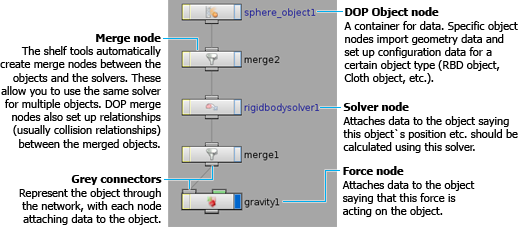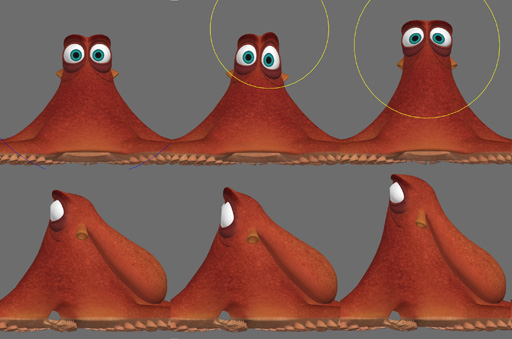![Monsters Inc. [Pixar]](images/pixar_8999674.jpg)
![Yarn-level cloth simulation
[Yuksel et al. 2012]](images/thumb_StitchMeshes_teacozy.jpg)
![[Langlois and
James 2016]](images/thumb_Langlois2016.png)

| Stanford
University, 2021 Winter CS 348C: Computer Graphics: Animation and Simulation Instructor: Prof. Doug James |
![Monsters Inc. [Pixar]](images/pixar_8999674.jpg) |
![Yarn-level cloth simulation
[Yuksel et al. 2012]](images/thumb_StitchMeshes_teacozy.jpg) |
![[Langlois and
James 2016]](images/thumb_Langlois2016.png) |
 |
| Description: Core mathematics and methods for computer animation and motion simulation. Traditional animation techniques. Physics-based simulation methods for modeling shape and motion: particle systems, constraints, rigid bodies, deformable models, collisions and contact, fluids, and fracture. Animating natural phenomena. Methods for animating virtual characters and crowds. Additional topics selected from data-driven animation methods, realism and perception, animation systems, motion control, real-time and interactive methods, and multi-sensory feedback. |
| Location |
|
Online (Zoom)
|
| Time |
TuTh 2:30PM - 3:50PM (01/12/2021 - 03/19/2021) | |
| Office Hours
(Prof) |
Wed 4:00-5:30 PM (Zoom), or by appointment |
|
| TA |
Kimberly
Te (CS Masters student, kimte@stanford.edu) Office hours (Zoom):
|
|
| Prerequisites |
Recommended:
CS148 and/or CS205A. Prerequisite: linear algebra (or
permission of instructor) |
|
| Textbook |
None;
lecture notes and research papers assigned as readings
will be posted here. |
|
| Communication |
Piazza: https://piazza.com/stanford/winter2021/cs348c | |
| Calendar |
Google
Calendar Link |
|
| Canvas |
https://canvas.stanford.edu/courses/111557 | |
| Requirements |
Students
are expected to attend lectures, participate in class
discussions and working sessions, and read the
supplemental materials. |
|
| Assignments |
There
will be programming assignments, and a final project based
on a student-selected topic. |
|
| Late
Policy |
We
allow 3 late days, with 10%/day deduction thereafter. |
|
| Exams |
None |
|
| ExploreCourses |
Link |
ASSIGNMENTS
(2021 Animating @ Home Edition)
|
 HW #1: Hello Houdini |
 HW #2: Procedural Modeling |
 HW #3: Dynamics |
 HW #4: Character FX |
 Final Project |
| SCHEDULE: |
| DATE |
TOPIC |
SUPPLEMENTAL MATERIALS |
| TuJan12 |
Introduction |
Slides:
Homework Activities:
|
| Due
WeJan20 |
Homework
#1: Hello Houdini |
Assignment Link Video Highlights |
| ThJan14 |
Introduction to Houdini |
Material: |
| TuJan19 -- TuJan26 |
Procedural Modeling![Procedurally modeled "mineral"
[David Ferreira]](images/thumb_proceduralMineral_DavidFerreira.png) |
Material: |
| Due
WeJan27 |
Homework
#2: Procedural Modeling![Procedurally modeling in "Planet
Alpha" [Adrian Lazar]](images/thumb_procedural_projectAlpha.png) |
Assignment Link Image Credit: "Planet Alpha," Adrian Lazar |
| ThJan28 TuFeb02 |
Particle
Systems |
Material:
References:
|
| Due WeFeb10 | Homework
#3: Dynamics![[Baraff and Witkin 1998]](images/thumb_BW98.jpg) |
Assignment Link |
| ThFeb04 |
Houdini
Dynamics |
Material:
|
| TuFeb09 ThFeb11 |
Constrained Dynamics |
Notes on Piazza
Resources Material:
|
| Due WeFeb17 | Homework #4: Character FX |
Assignment Link Submit your video artifact for weeklies |
| TuFeb16 |
Position-Based
Dynamics![From
[Muller et al. 2006]](images/thumb_posBasedDyn.jpg) |
Slides
(PDF) References:
|
| ThFeb18 |
Final Project Discussion |
Slides
(PDF) |
| TuFeb23 |
Rigid-Body Motion![Rigid
Body Dynamics (from [Baraff 2001])](images/thumb_RBD.png) |
Slides/Notes (PDF) References:
|
| ThFeb25 |
Final Project Proposal Presentations |
|
| Application
of Rigid-Body Motion: Shape Matching Methods ![Pengchinko! [Rivers and James 2007]](images/thumb_fastlsmPenguins.jpg) |
Discussed:
|
|
| TuMar09 |
Rigid-body Contact: Impulse- and Contraint-based Methods: ![From
[Erleben]](images/thumb_erleben.png) ![From [Kaufman et al. 2008]](images/card.png) |
Material:
|
| TuMar02 |
Particle-based Fluids |
Slides/notes on Piazza Material:
|
| ThMar04 |
Fluid Animation![From [Stam 1999]](images/thumb_stableFluids.png) |
Slides/notes on Piazza Topics:
|
Kelvinlets
|
Material:
|
|
| ThMar11 |
Animation Sound |
Material:
|
| TuMar16 |
Guest Lecture: "Geometry Processing @ Pixar" ![From "Power Particles" [de Goes et al. 2015]](images/thumb_pp.jpg) |
Guest Speaker: |
| ThMar18 |
Final Project Presentations |
See Canvas for instructions (slide deck, submission) |
Student Results (CS348C
2020 Winter)
|
Student Results (CS348C
2019 Winter)
|
Related
prior course offerings:
|
| DATE | TOPIC | SUPPLEMENTAL
MATERIALS |
| Assignment #1: Position-Based Fluids |
|
|
| Implicit Integration & Cloth Simulation ![[Baraff and Witkin 1998]](images/thumb_BW98.jpg) |
Material:
|
|
Lightning,
Ice Growth, and Diffusion Limited Aggregation (DLA) |
Material:
|
|
| |
Material
Point Method (MPM), and Snow
Simulation![[Stomakhin et al. 2013]](http://alexey.stomakhin.com/research/snowman.jpg) |
Discussed:
Material:
|
| Prog. Assignment #2: Position-Based Dynamics ![From [Muller et al. 2006]](images/thumb_posBasedDyn.jpg) |
|
|
Fracture Animation![Fracture
sound -- From [Chadwick et al. 2012]](images/thumb_fasterPAN_SCA2012.jpg) |
Material:
|
|
Material:
Power Particles: An
incompressible fluid solver based on power diagrams
|
||
| Assignment #2: Constrained
Dynamics |
||
| |
||
Noise & Turbulence Modeling![from [Kim et
al. 2008]](http://www.cs.cornell.edu/%7Edjames/research/pics/Kim08.png) |
Materials:
|